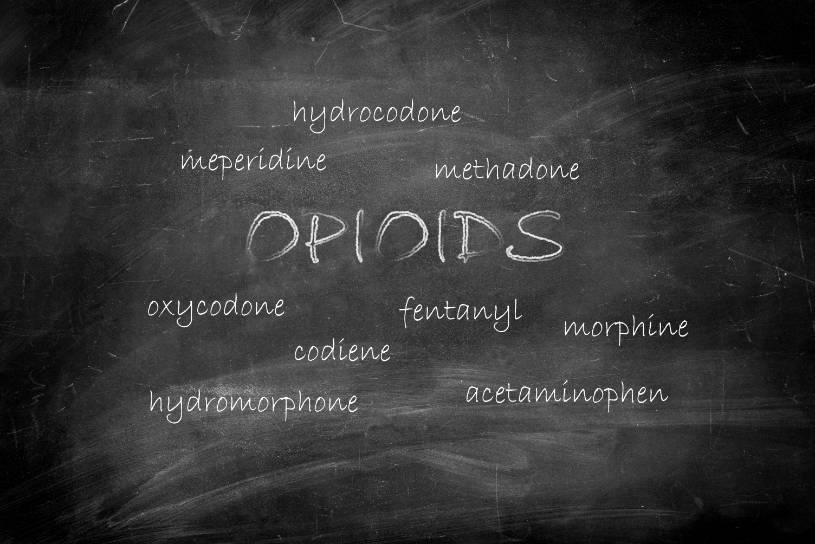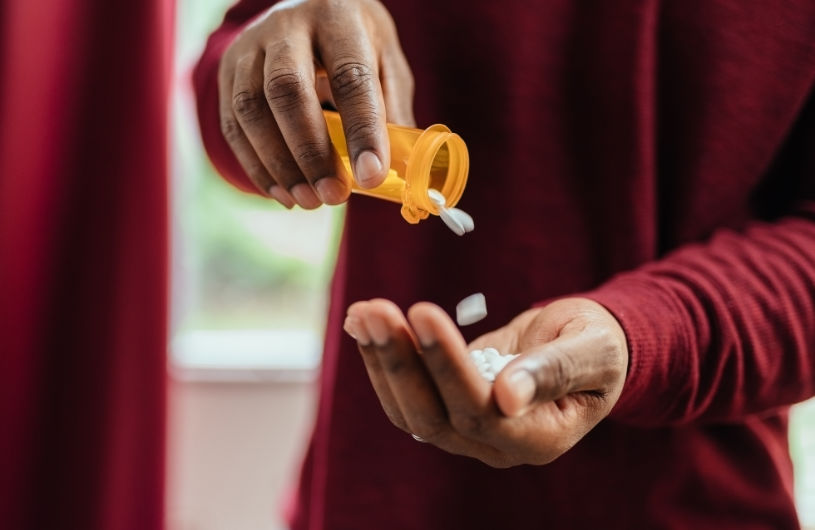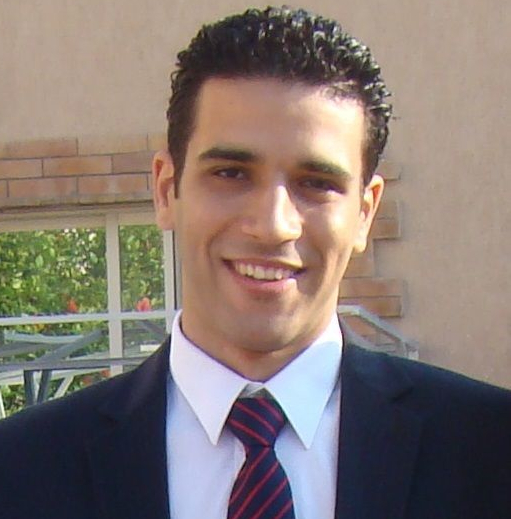Opioid addiction occurs when people take these drugs in large doses over a prolonged period. An opioid is a substance that is present in several common painkillers. It is responsible for alleviating both acute and chronic pain. Pain is among one of the biggest national problems. Information from the National Health Interview Survey shows that pain affects an estimated 25.3 million American adults daily.
Table Of Contents:
Various medications have been developed to assist with the management of both acute and chronic pain. These painkillers are some of the most common classes of medications used among the general population to relieve pain symptoms. However, they are often abused. Available information from the national Department of Health and Human Services estimates that 10.1million people above the age of 12 were involved in opioid abuse.
Opioid use disorder is a major health issue that needs to be tackled holistically. Read on to discover more information about the types of opioids, opioid addiction symptoms, and how to treat them.
More About Opioids:
What Are Opioids?
Understanding what opioids are, the types of opioids, and what the drugs do to the body is essential to know how this type of medicine may possibly lead to addiction. Many would make a comparison such as opiate vs. opioid. An opiate is a drug that consists of a chemical extracted from the opium poppy plant. Opioid drugs were initially made from extracts of the opium poppy plant. However, the majority of analgesic medicines are not made from natural compounds anymore, but rather synthetic chemicals that are made to have a similar structure to that yielded by the natural extracts that used to be taken from the opium poppy plant.
Opioids are on the controlled substances list. A valid prescription is required to use and purchase them. In many cases, opioids are also called narcotics, due to the classification of these medicines. While prescription opioids have a goal to serve when prescribed to a person, the illegal use of this medication is for recreational purposes. Heroin is a prevalent example of an addictive substance that is sold illegally on the streets. Heroin forms part of the drugs that have led to an epidemic of opioids.

What Are The Types Of Opioids?
Opioids come in three main types – natural, semi-synthetic, and fully synthetic. All these types of opioids can cause dependence and subsequent opioid addiction. However, some are more dangerous than others thus, caution must be exercised in their administration.
Natural Opioids
Natural opioids list is a range of medications derived from plants such as the opium poppy. They contain alkaloids and nitrogen-based compounds and their main active chemical morphine. Some have less potential for addiction, but taking an overdose could lead to opioid abuse and addiction. Natural opioids list include:
Semi-Synthetic Opioids
The next group of opioids is semi-synthetic opioids. These opioids are developed in the lab from natural opioids. Thus, semi-synthetic opioids are man-made but derived from natural sources. Common of semi-synthetic opioids list include:
Many physicians prefer not to provide a person with a long-term prescription of these medicines, as individuals are more likely to experience more severe side effects associated with the drugs. The risk of addiction is also higher when they are used in the long-range.
Fully Synthetic Opioids
The third type is known as fully synthetic. These are completely man-made opioids without any naturally occurring substance. These are the most powerful opioid medications on the market. Their misuse can result in dire health consequences. The widespread fully synthetic opioids list include:
Heroin is illegal and information from the Centers for Disease Control and Prevention indicates that about 40 people die from taking an overdose of heroin. Other drugs like fentanyl are very effective in treating pain. However, this has led to a spike in the illegal production and distribution of the medication. So, health experts are cautioning the public to watch out for those medications and try to minimize their use to avoid complicating their health issues.
What Are Opioids Used For?
Due to the opioids mechanism of action, these drugs are most commonly prescribed to treat pain symptoms. In the majority of cases where a physician would prescribe opioid pills, the individual is experiencing acute pain. The chemicals found in medicine affect the brain. By changing the balance of certain chemicals in the brain, the person who takes the drug experiences a relaxing feeling. This helps to alleviate the pain that the person is suffering from.
Opioids drugs have a variety of uses depending on the predicament. Some can be used to treat acute and chronic pain while some are effective in the treatment of depression. Other uses include cough and migraine. Opioids drugs can also be used for treating anxiety. However, the use of these drugs to cure anxiety and depression has not been approved. In cases where there is no improvement in patients who suffer from pain caused by rheumatoid arthritis, doctors may prescribe opioids.
Other Uses of Opioids
Studies indicate that opioids drugs can also treat chronic diarrhea. Loperamide (Imodium) is a synthetic opiate agonist that inhibits receptors of the medication in the brain. This action leads to the slowing down of bowel movements. Opioids drugs were used for pain management in cancer patients. However, since 2013, medical practitioners have desisted from using opioids to treat pain in cancer patients. Though the exact reason is yet to be determined, it is believed that opioid abuse is a major factor.
The medication is sometimes included in certain cough medicine mixtures as well, as the chemical may help to reduce coughing. This is because the cough medication contains a chemical referred to as dextromethorphan (DXM) which is a cough suppressant. Thus, it works by subduing the cough. Most cough syrups that contain DXM also have antihistamines and decongestants. All these work to ensure the cough is treated.
The short answer to whether or not dependence is possible would be yes – an epidemic has even been declared in the U.S. due to a significant number of people abusing and becoming addicted to both prescription and illegal types of these chemicals. Dangers of this drug, hidden by some manufacturers, lead to many lawsuits across the country.
Opioid Addiction And Abuse Overview
Addiction to these medicines has been recorded multiple times, yet many individuals still ask whether or not these drugs are truly addictive. Opioids are highly addictive due to their activity on the brain’s reward center. When opioids are ingested they stimulate the release of endorphins which are responsible for pleasure. Thus, the patient feels a strong sense of pleasure though it is temporary. The CDC estimates out of the over 70,000 deaths that occurred in 2019, 70% were opioids-related. S. That is why there is a need for a national consensus on how to combat this raging phenomenon.

Signs and Symptoms Of Opioid Addiction And Abuse
Opioid abuse sometimes referred to as opioid use disorder comes with its physical and psychological signs which are visible and destructive. Opioid addiction can interfere with the daily life of its victim and their relationships. It can lead to a secluded life if the abuse is not reported early.
Physical Opioid Addiction Symptoms
Physical opioid addiction symptoms are the visible signs that indicate that a person is suffering from opioid use disorder or experiences opioid effects. Some physical signs of opioid abuse are not dangerous and may go away when the opioid abuse stops. Such symptoms may be treated with intensive home care. Other signs can be fatal and may require prompt medical attention to avert complications.
Common Physical Signs of Opioid Use Disorder Include:
- Slow breathing rate
- Uncontrollable Cravings
- Weight loss
- Lack of hygiene
- Decreased libido
- Isolation from family and friends
- Vomiting
- Financial hardships
- Erratic pulse
Some of the physical opioid addiction symptoms may need medical intervention. Doctors may prescribe alternatives to help with opioid addiction treatment. However, patients should not withdraw abruptly as this may lead to other health complications. Patients should seek the help of medical professionals if they want to wean off these medicines.
Psychological Signs of Opioid Addiction
Opioid abuse can affect a person’s state of mind and alter their personality. It can lead to severe health conditions that can be fatal. Victims of opioid abuse sometimes lose or have a distorted sense of reality which may result in other dangerous mental health conditions.
Here Is a List of Psychological Opioid Use Disorder Symptoms:
- Depression
- Anxiety
- Loss of concentration
- Loss of interest in activities
- Confusion
- Mood swings
- Distorted perception of reality
Psychological opioid use disorder symptoms may require treatment at rehab centers. Since rehab centers both have medical and counseling services they’ll be well-equipped to help patients recover from opioid use disorder. To aid in the prevention of further complications, patients should seek early treatment once these symptoms are spotted.
Who Is Most At Risk Of Addiction?
Anyone can be at risk of opioid use disorder. The prevention of opioid addiction and dependence is better than treating it. That is why it is essential to take drugs according to a doctor’s prescription. Available information indicates specific demographics are more prone to opioid addiction and dependence. Such people should be wary of the drugs, especially painkillers, they ingest.
People Who Are Susceptible to Opioid Addiction and Dependence Include:
- Middle-aged people
- Patients with a history of substance misuse
- Patients who suffer from psychiatric comorbidities
- Individuals with a family history of drug misuse
- Individuals suffering from chronic pain
- Patients who take drugs outside the prescribed method of ingestion
Appropriate screening, identification, and good pain management are essential in the prevention of abuse and dependence. Patients with a history of drug misuse should inform their health care providers before medicines are prescribed. Health providers should investigate the medical information of a patient before prescribing pain medicines. This is a crucial step in the prevention of addiction.
Drug Addiction Treatment And Recovery
The abuse of analgesics can be life-threatening to a person. One of the most important risks that should be noted is an overdose, which can cause significant damage and lead to fatal complications. No less dangerous is opioid withdrawal, so when a person expresses addiction symptoms, it is important for appropriate action to be taken. Several addiction treatment programs have been developed following the declaration of an epidemic. While a person may want to first commit to beating addiction on their own, it is strongly recommended to seek professional medical treatment to avoid painful withdrawals and relapse.
When professional addiction treatment services are utilized, often in the form of a rehab that specializes in drug addiction rehabilitation programs, the person can gain access to the support required to ensure they can overcome the addictive behavior that the use of this medication has imposed on them. A detox period will often be required for the person to get off the opioid addiction effectively. During this time, medical supervision would be advised. This ensures the person can get appropriate drugs that can assist with the addiction treatment.
Hope Without Commitment
Find the best treatment options. Call our free and confidential helpline
Most private insurances accepted
Page Sources
- US Department of Health and Human Sciences. (n.d). Opioids Crisis Statistics. US Department of Health and Human Sciences. https://www.hhs.gov/opioids/about-the-epidemic/opioid-crisis-statistics/index.html
- Drug Enforcement Agency: Diversion Control Division. (n.d). List of Controlled Substances. Drug Enforcement Agency: Diversion Control Division. https://www.deadiversion.usdoj.gov/schedules/
- DEA. Narcotics(Opioids). (n.d). DEA. https://www.dea.gov/taxonomy/term/331
- National Institute on Drug Abuse. (n.d). Over-the-Counter Medicines DrugFacts. National Institute on Drug Abuse. https://www.drugabuse.gov/publications/drugfacts/over-counter-medicines
- S. Dorn, MD. (n.d). Treatments for Diarrhea. UNC Center for Functional GI & Motility Disorders. https://www.med.unc.edu/ibs/wp-content/uploads/sites/450/2017/10/Treatments-for-Diarrhea.pdf
- American Society of Anesthesiologists. (n.d). Opioid Abuse. American Society of Anesthesiologists. https://www.asahq.org/madeforthismoment/pain-management/opioid-treatment/opioid-abuse/
- American Psychiatric Association. Opioid Use Disorder. American Psychiatric Association. https://www.psychiatry.org/patients-families/addiction/opioid-use-disorder
- L. Webster. (2017). Risk Factors for Opioid-Use Disorder and Overdose. Anesth Analg. https://pubmed.ncbi.nlm.nih.gov/29049118/
- National Cancer Institute. (2020). Are Patients Getting the Opioids They Need to Control Pain? National Cancer Institute. https://www.cancer.gov/news-events/cancer-currents-blog/2020/opioids-cancer-pain-oncologists-decreasing-prescriptions

 Authored by
Authored by  Reviewed by
Reviewed by 

